Samples Lasercutted#
Having chosen the pattern and created the dxf file for the samples I did various tests understanding if it was useful to manage the consumption of the material on which it was engraved.
Trying to laser the 20s pattern I realized that it worked badly, there would be too many changes to make, the cuts got too close to the edges. Many parts of the module came off too easily. I tried to understand how many trials I needed (especially not to consume too much kombucha). I created a sort of table with various samples
- samples with belle epoque decorative motif
- samples with Japanese decorative motif
- samples with fabric backing (gauze type)
- check the singles samples dimensions (5x5 cm)
- etc etc
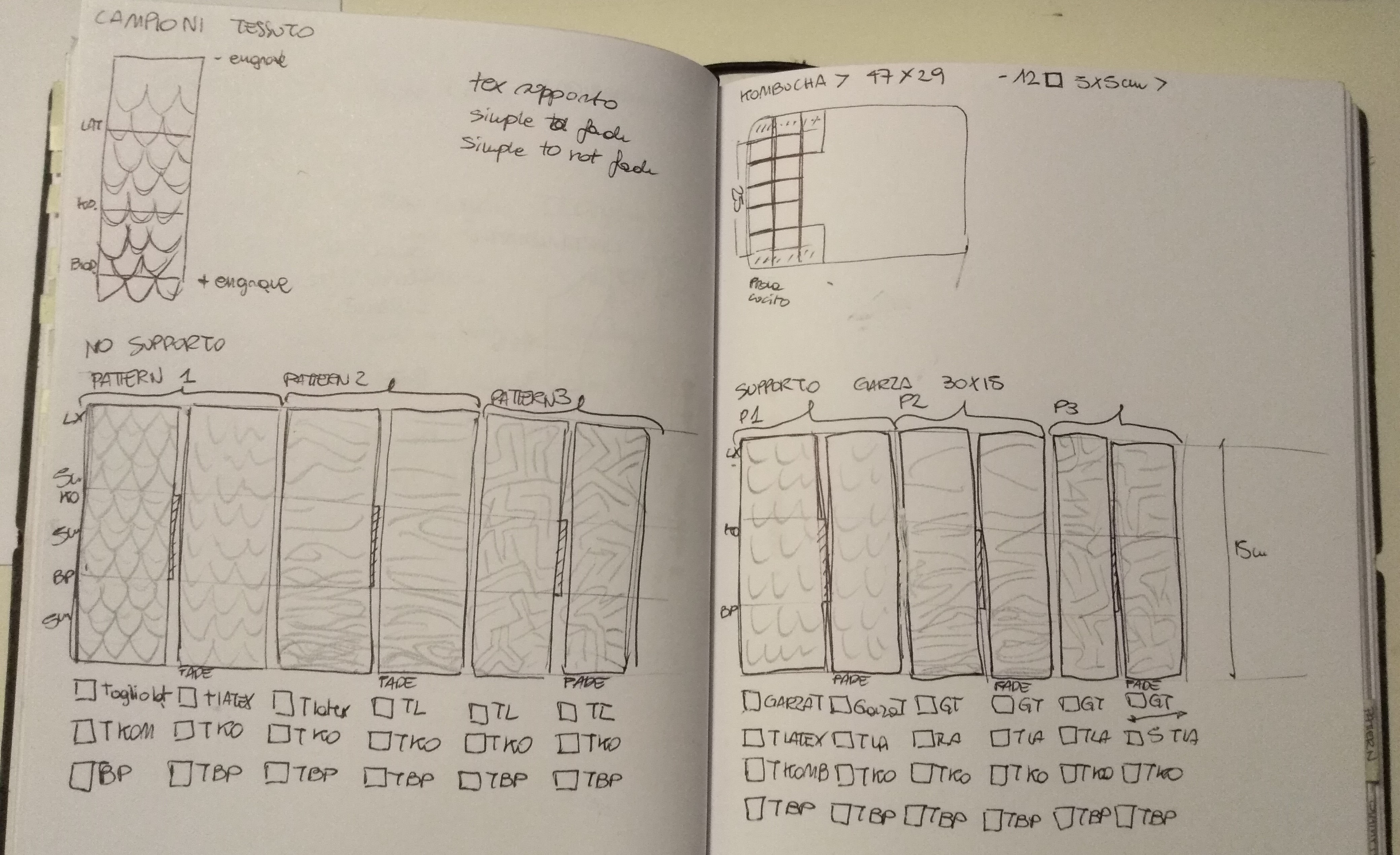
Fabric Samples#

Japanese Pattern Samples#


The different layers of the same module but laser-cut on different fabrics started to suggest the effect I could have achieved, creating a kind of modern lace.
Latex Samples#
I tried laser cutting two different thicknesses of Latex. The thicker, natural color was definitely complicated to cut and remained very rigid. The second, purple, was much lighter. It seemed to me it could be more suitable to be worn with more comfort. I’ve clean the samples after cutting with paraffinum oil and a TNT towel to eliminate the sticky that creates the laser during cutting. The second step is to use talc to restore opacity to the material.
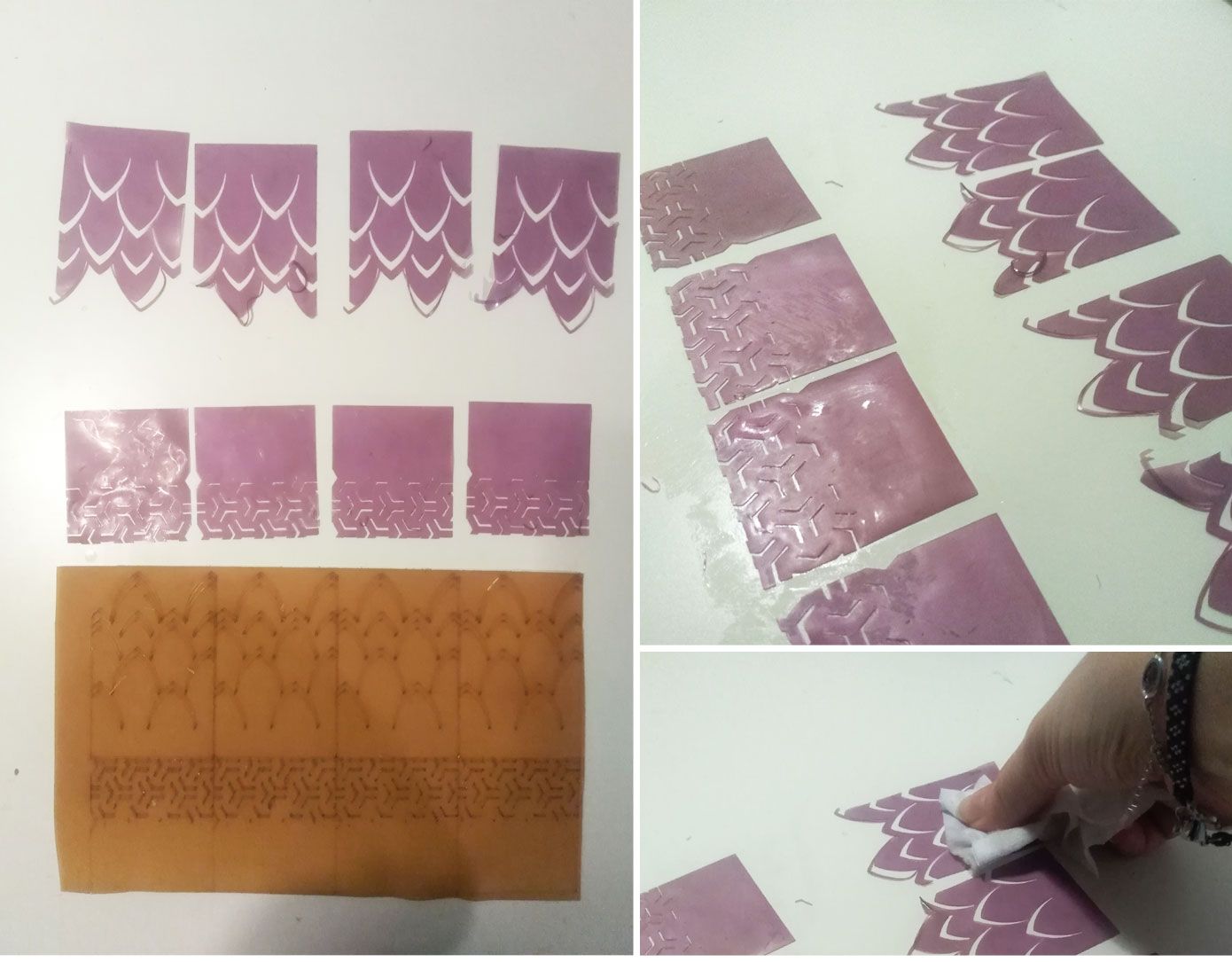
In the fablab we had several pieces of thin latex available. I selected some colors and cut out samples to make definitive tests.

laser cutting parameters (thin latex) * vel 150 * pow 40 (20)
Kombucha Samples#
The result of laser cutting on the kombucha depends very much on the regularity of the obtained sheet. It is impossible to eliminate all bubbles, thick or irregular parts. is the nature of the material. I had the impression that cutting the material made it more resistant. The cut heals very well with the parameters shown below.
I noticed that the smell of kombucha changes a lot when it is lasered. when it is dry the smell of vinegar is still perceptible (much less than the wet material!). The combination with the smell of burnt laser cutting on kombucha instead becomes similar to a type of honey, that of chestnut type..
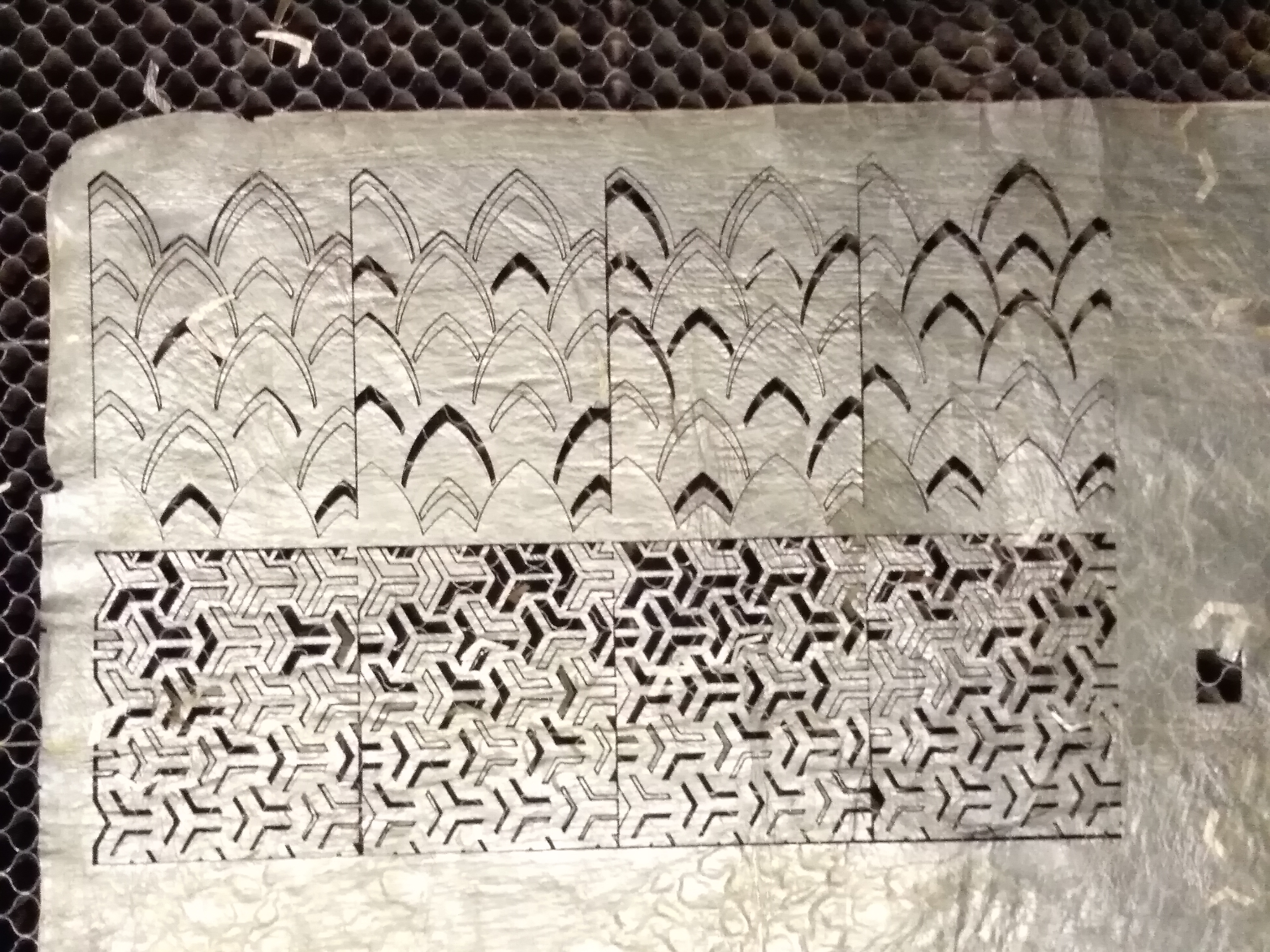
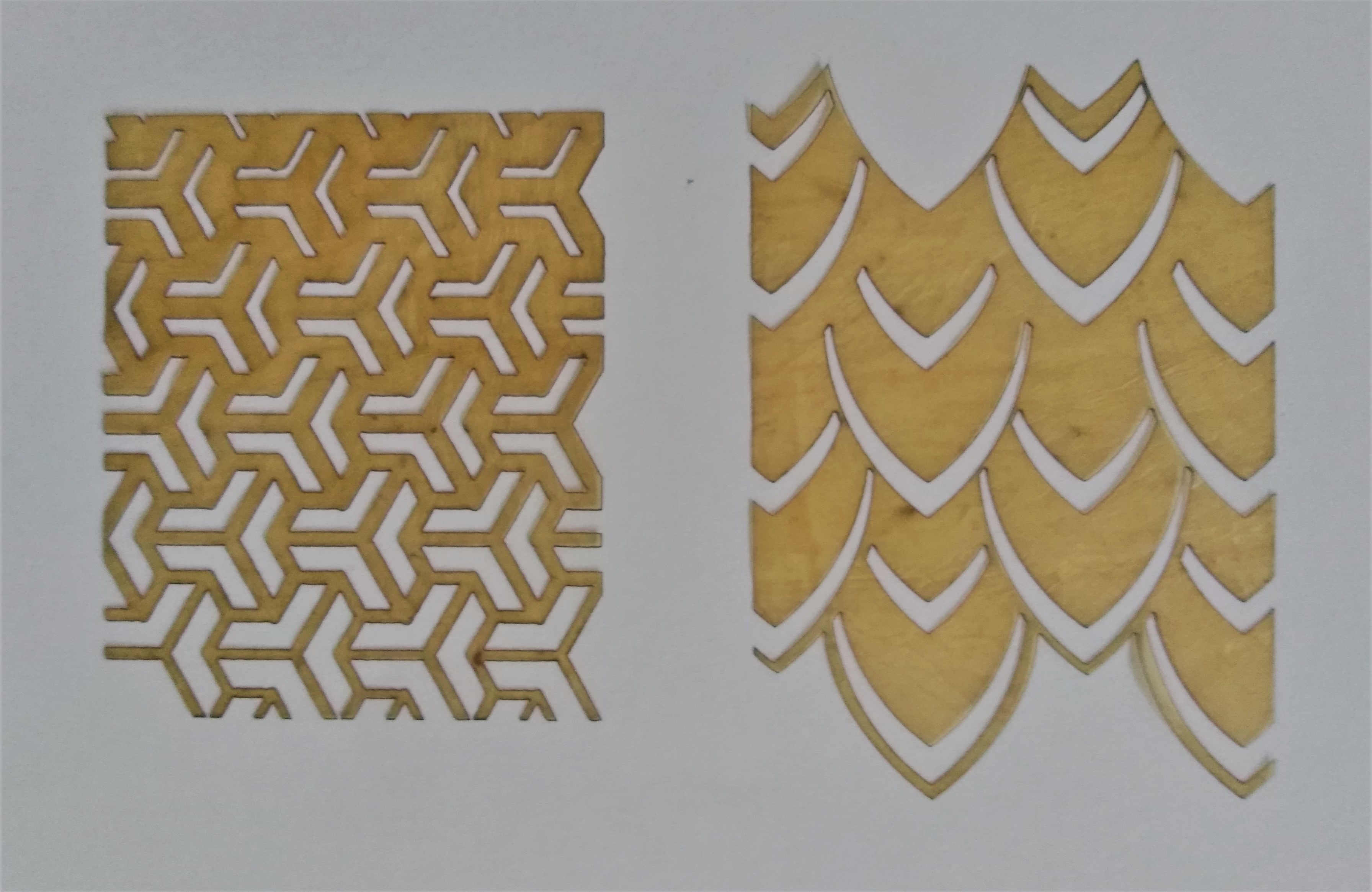
laser cutting parameters (kombucha) * vel 40 * pow 20
Bioplastics Samples#
I started to laser clear gel-based bioplastics. I entered an excessive speed (vel 100) that did not completely detach the pieces as in the other samples. This drawback could actually also be an opportunity to use the same pattern but similar to a partial incision.

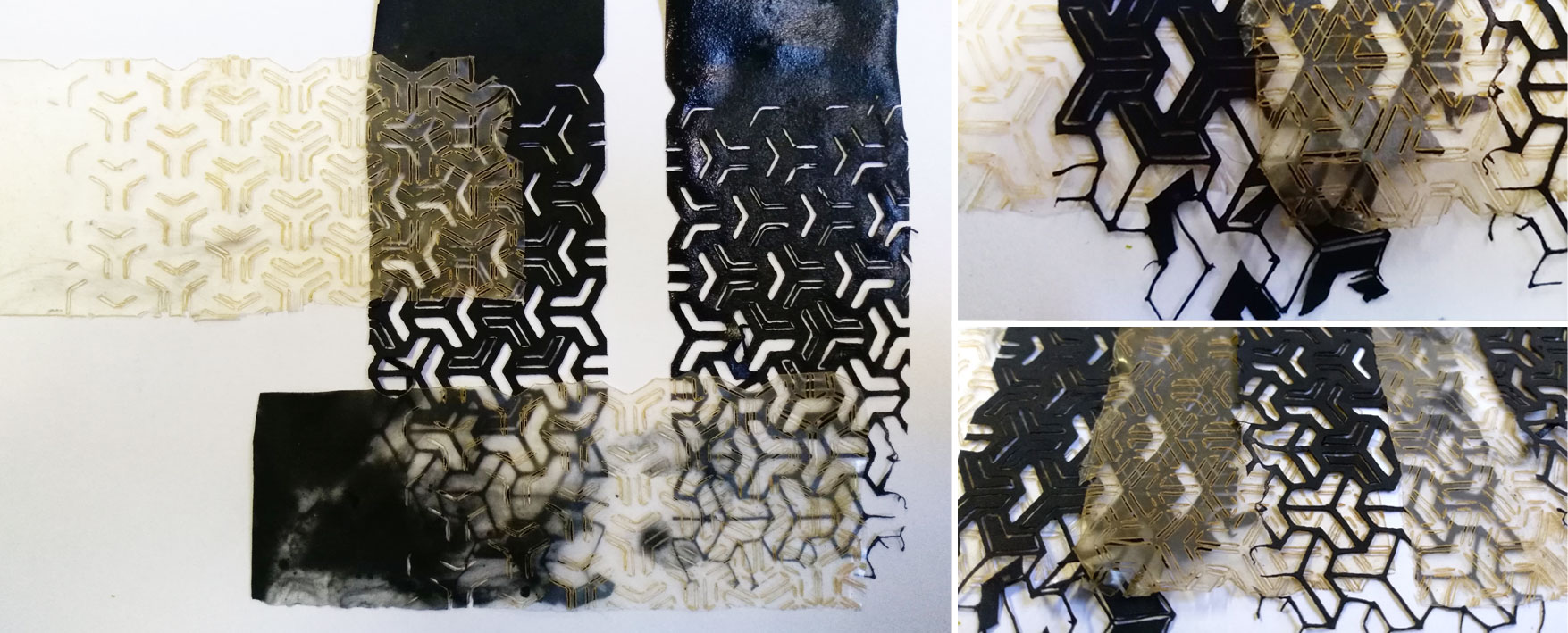
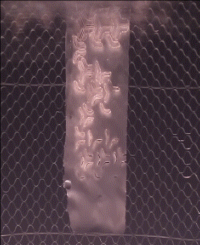
laser cutting parameters (thin biosilicone) * vel 40 * pow 40 (20)
Join between materials#
Fabrics + Kombucha#
The union between the kombucha and the other materials was the one that seemed to me more suitable to be deepened. The kombucha in fact would have been the middle material between the biodegradable and the more durable (latex). I saw how it reacted by drying it on the heaviest fabric (cotton canvas) and on a gauze support. I thought that the porosity of the fabrics facilitated the union with the material but it seemed to me irrelevant. In the case of the gauze the two layers of kombucha with which I created a sandwitch have formed a very imperfect fusion.

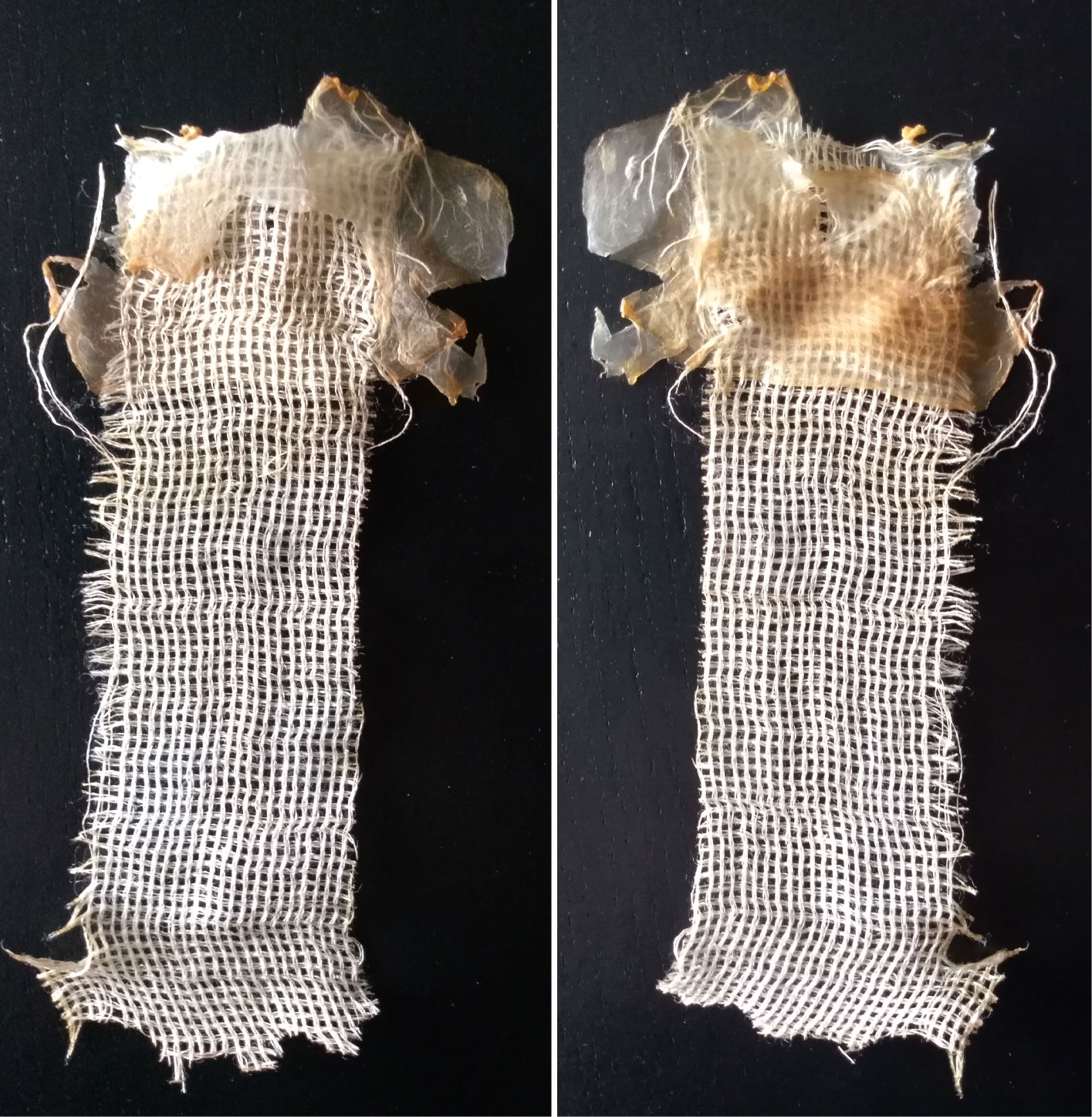

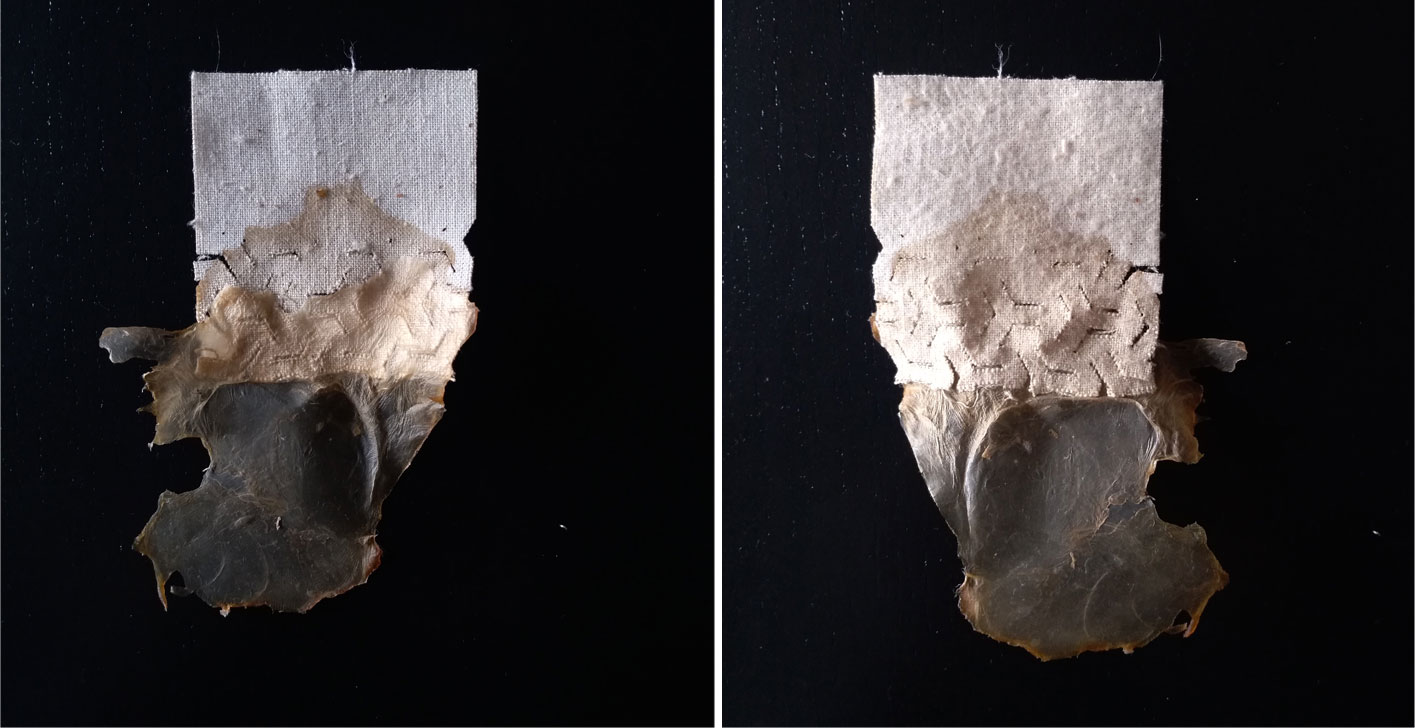
Latex + Kombucha#
Surprisingly, a rubbery material with no porosity turned out to be very performative with the kombucha. Perfect!
I ran two tests: * wet piece of kombucha + latex + wet piece of kombucha * dry piece of kombucha (laser cut) + latex + freshly pressed kombucha and dried
In both cases the join, incorporating the latex in the middle, proved to be very strong.

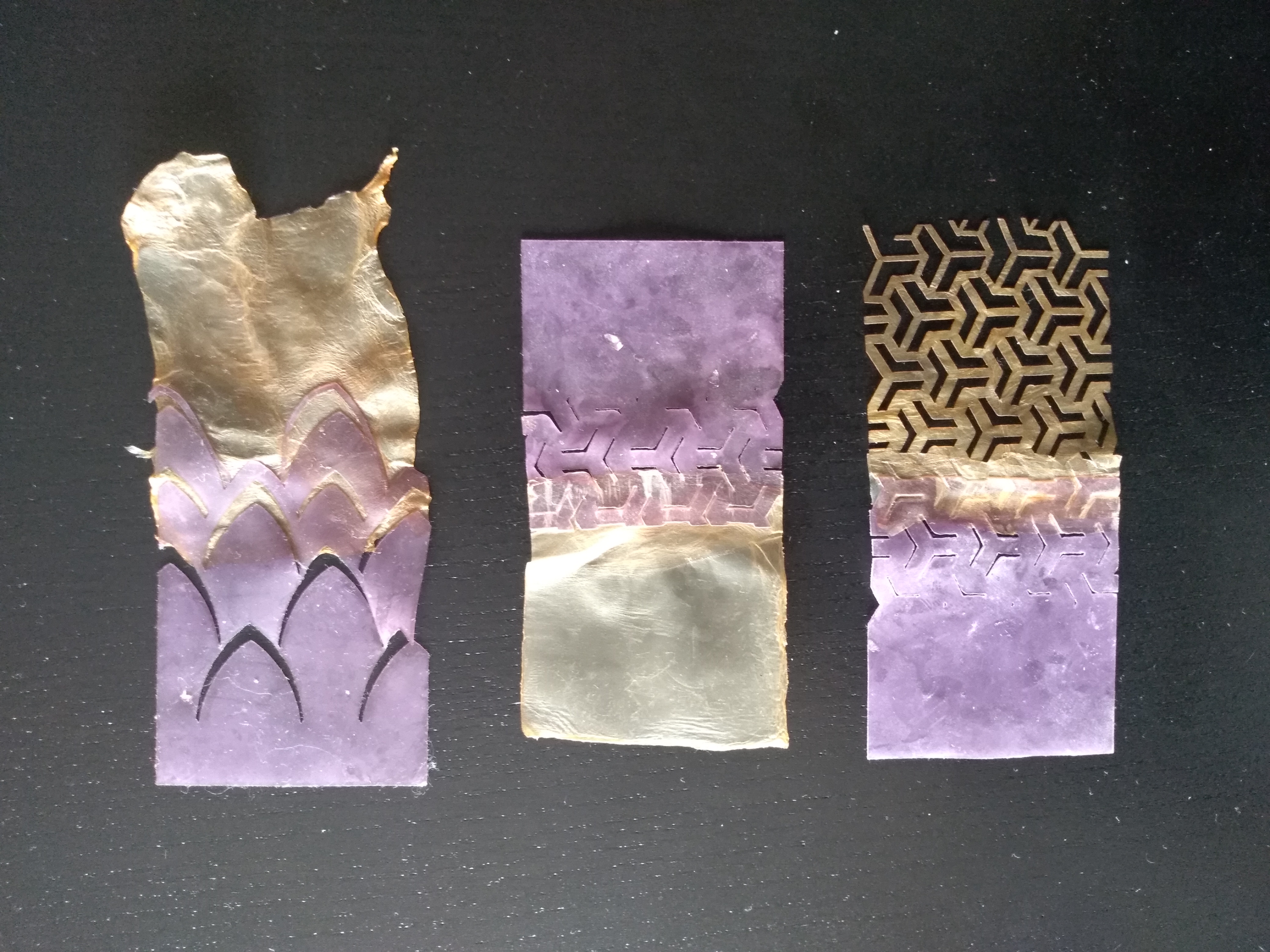
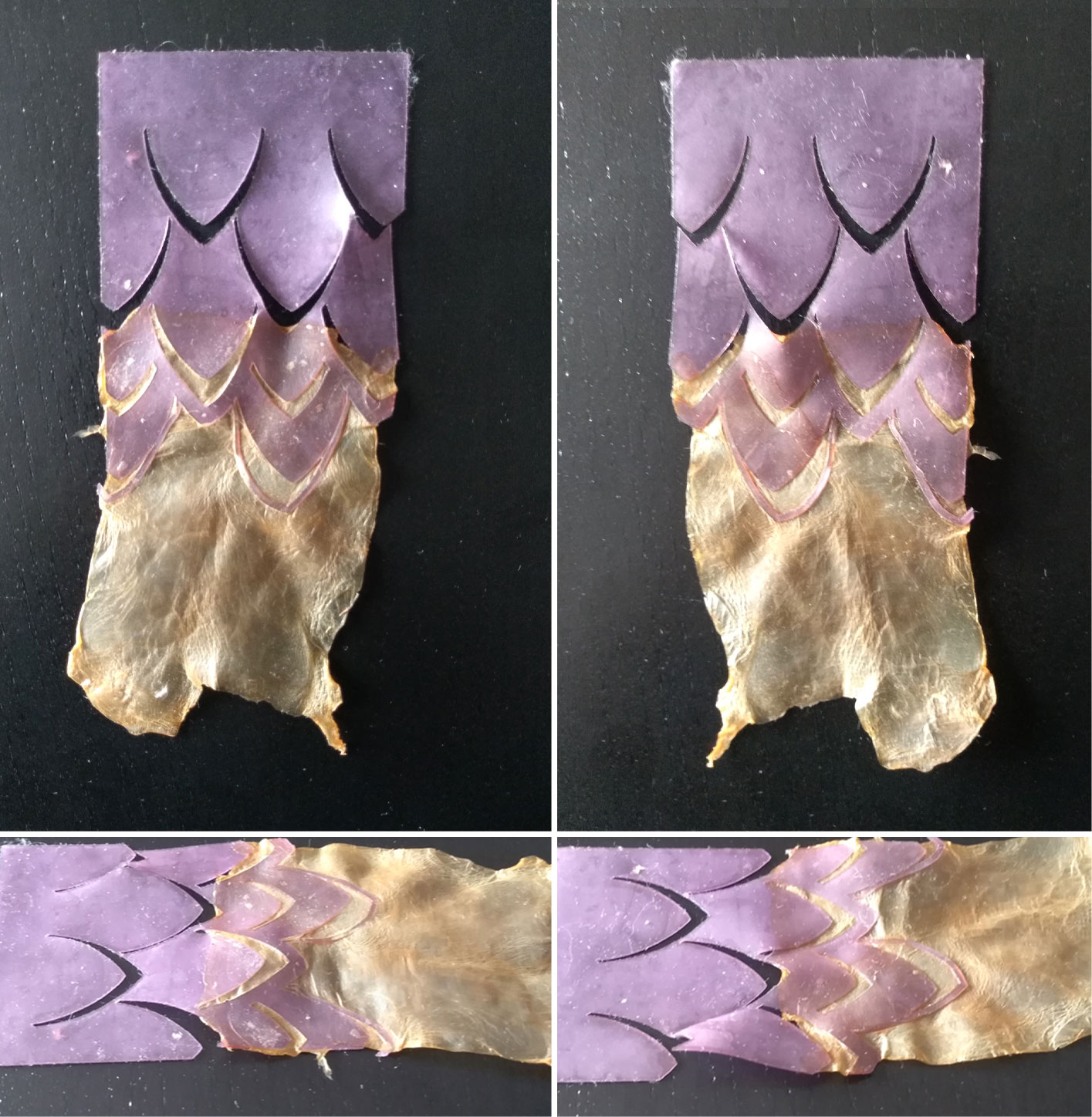

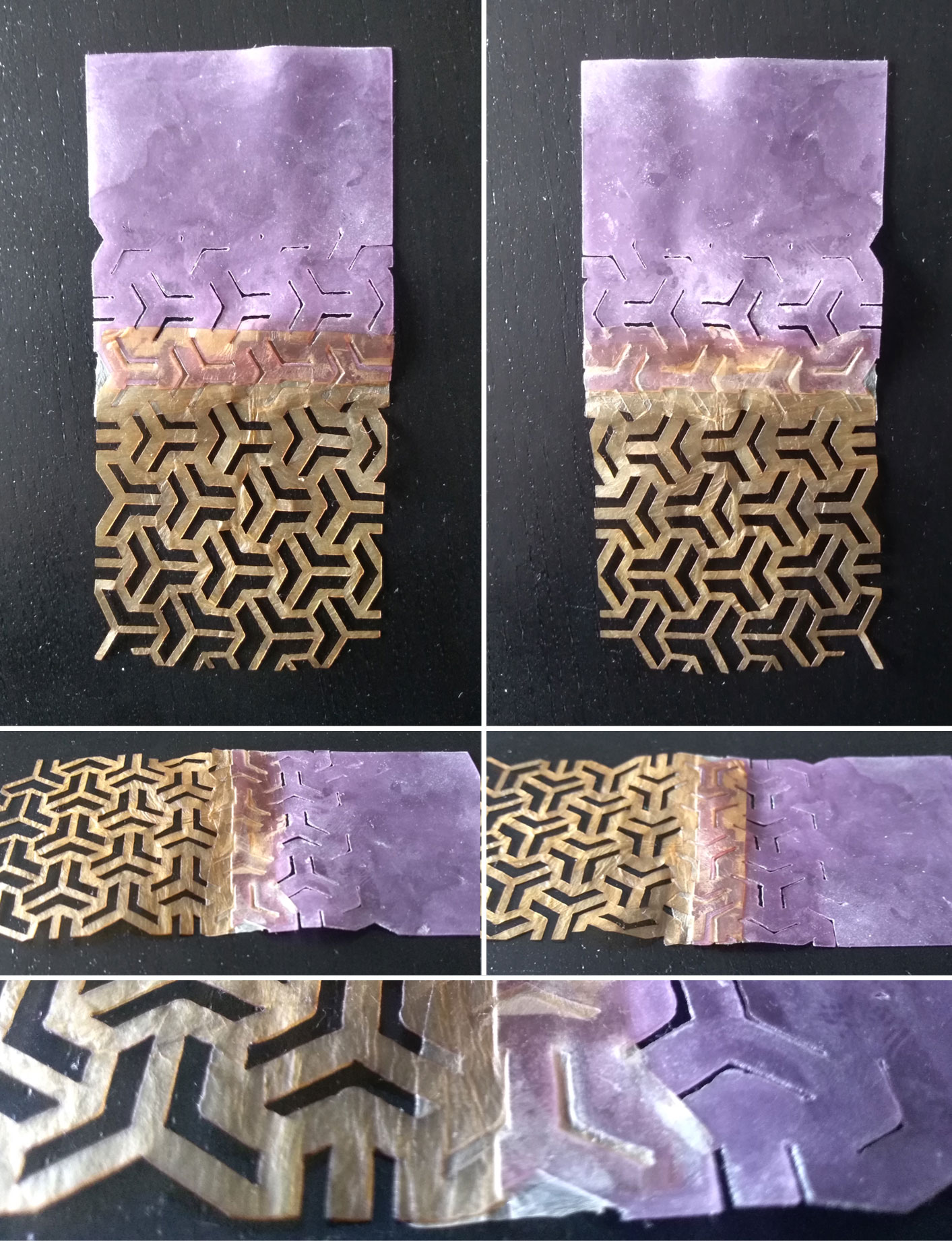
Latex + Kombucha + Biosilicone#
To combine the two natural materials I moistened the two samples with a clean microfibre cloth, pressing firmly and eliminating the bubbles between layers. In this case for latex and kombucha I tried to blend the scoby to obtain a more homogeneous paste or a kind of cream.
The join works but there are many imperfections. For the prototype I will prefer to select a thin but homogeneous scoby. It’s a better result from an aesthetic point of view.
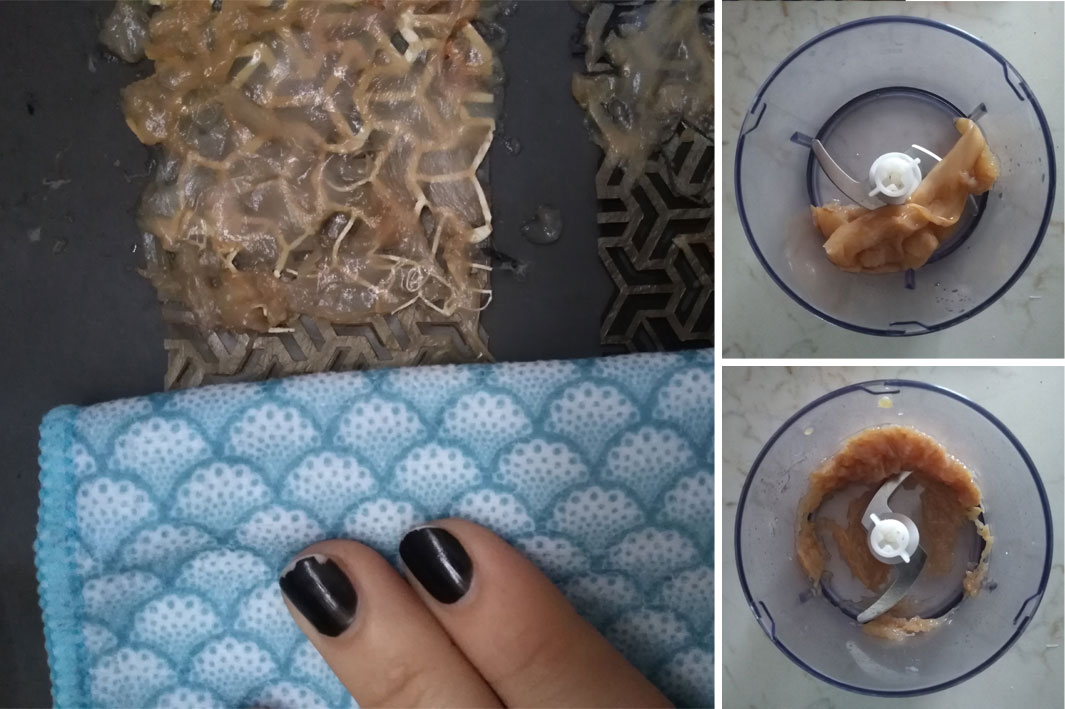
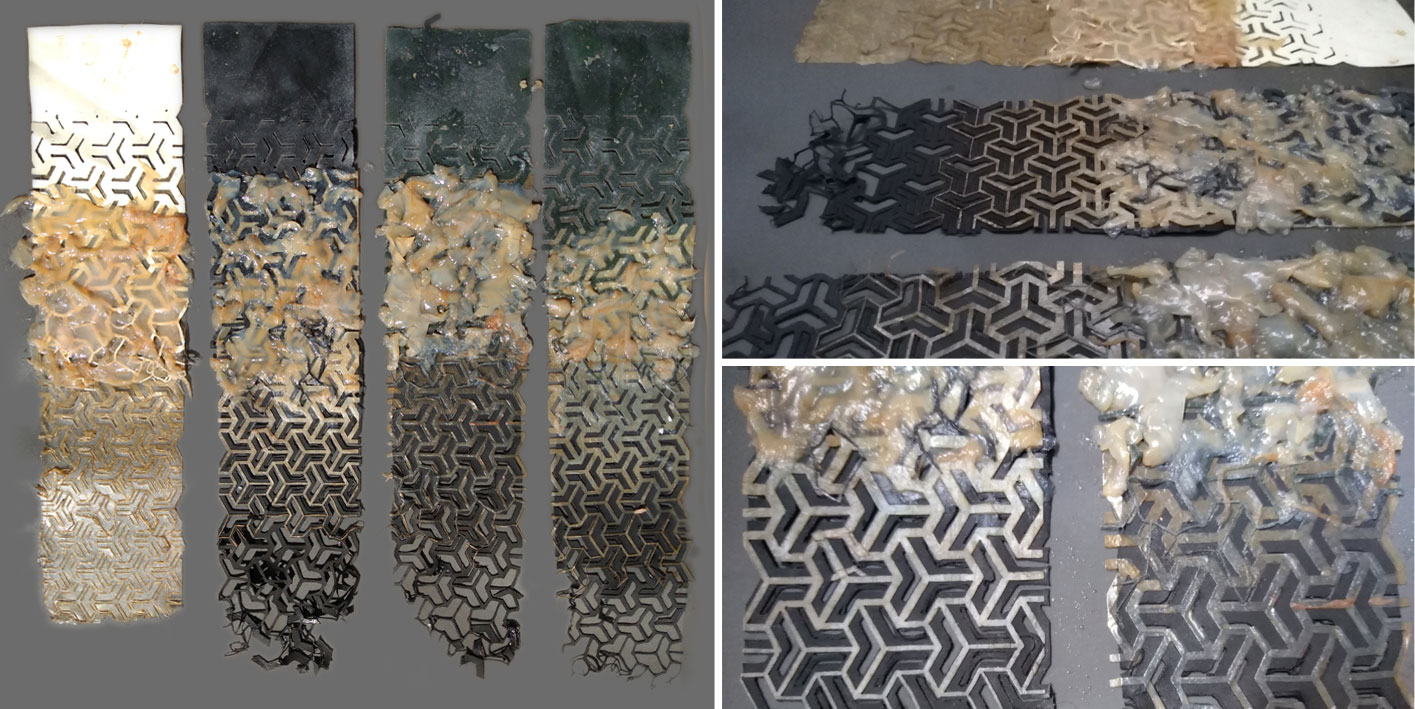
Colors and textures#
In the first week of March I tried to combine different colors of latex available to wemake with natural kombucha. At the fablab there were several pieces sufficient to get my piece of dress. I have two avenues available: the first involves a dark latex (opaque black or slightly transparent greenish-black); the second option is a cream-colored latex, very clear that it suggested I also use it as a wedding dress …


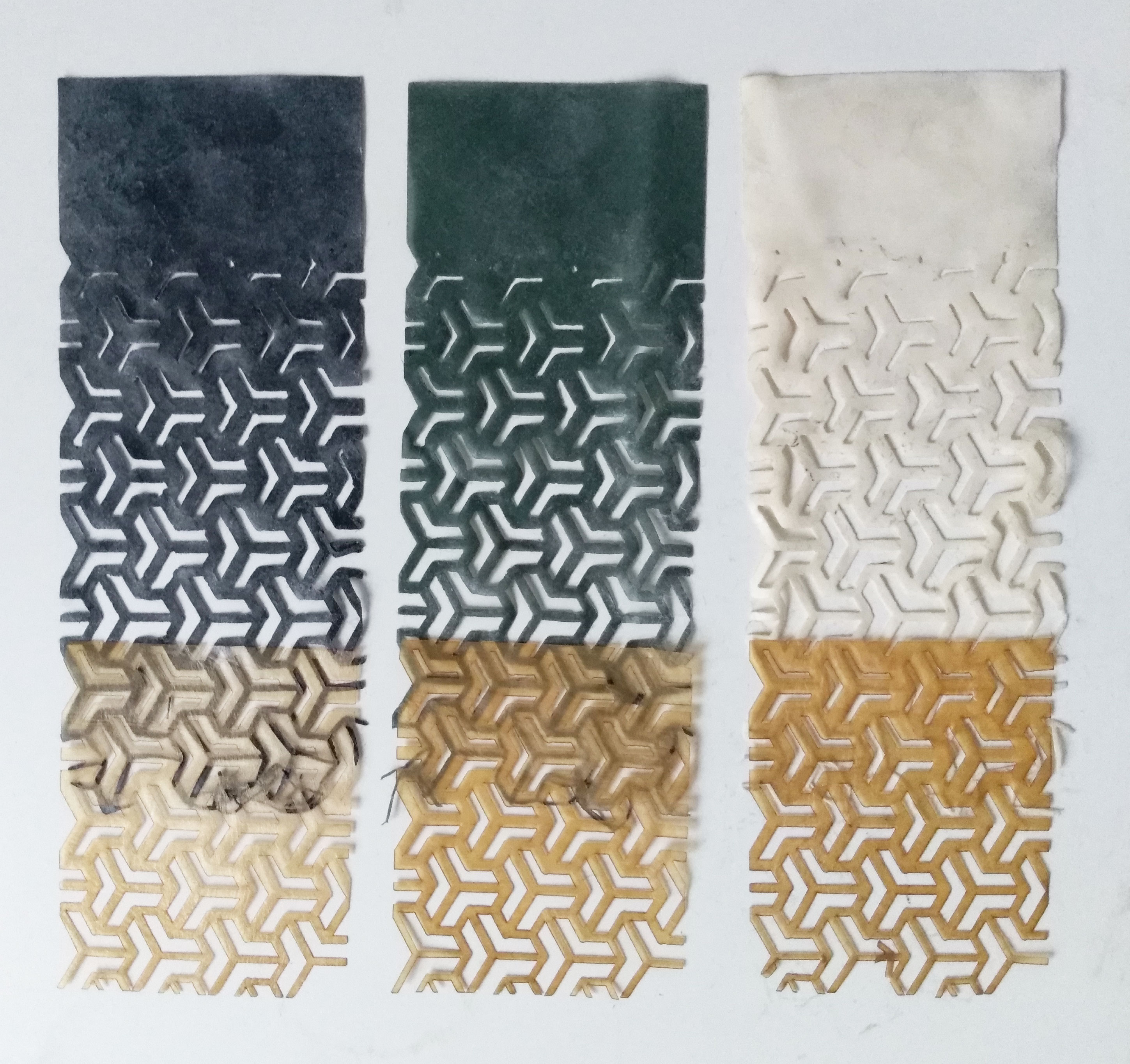

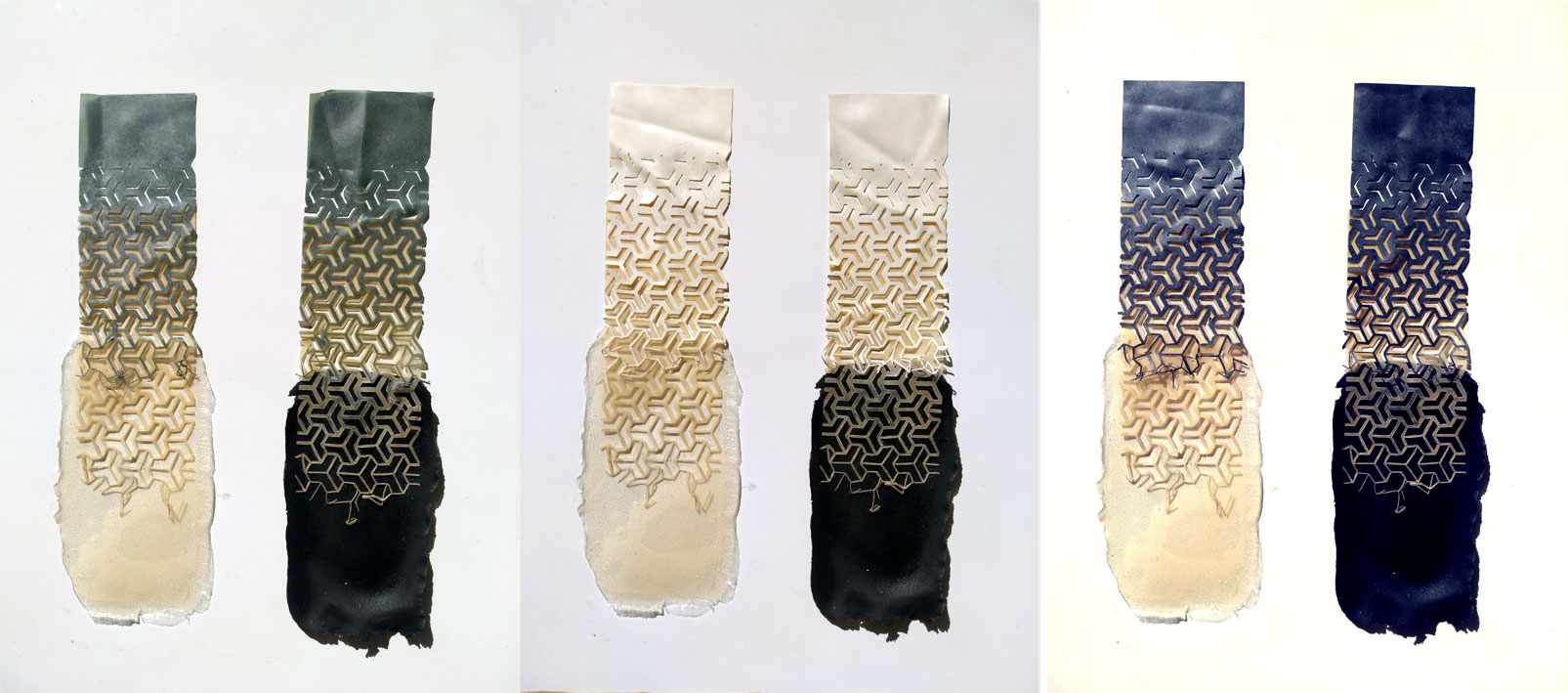
Fading study#
With two samples I carried out tests to study the reaction to humidity and crumpling. To speed up the process every half hour I performed a test on the two samples.
Tests * Crumple test: I completely crumpled the sample into my hand. * Humidity test: I vaporized a solution of water and salt (at about 5%) to simulate human sweat.

After performing the test 32 times I noticed that:
- the sample for the humidity test has not undergone notifiable changes.
- The crumple sample has started to break away completely in its biosilicone part.
The causes can be numerous: the absence of humidity does not make the composite fabric quite elastic, the way I performed the test (crumpling the sample in the hand) is not very faithful to the use of the dress. I should perhaps have rubbed it to simulate the use of a skirt.
